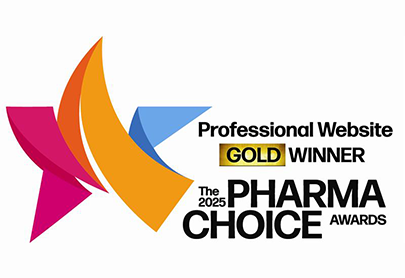Case Study
Streamlining Global Content Delivery for an HCP Engagement Portal

Following a merger between two large pharmaceutical companies, the new global entity created an expansive portfolio across 165 countries. Besides integrating both commercial organizations — which involved merging people, processes, and technologies — other critical tasks included unifying customer data, ensuring compliance with GDPR and other local data privacy regulations, and executing strategic initiatives to enhance communication with existing customers and improve overall customer experience (CX).
To achieve these mandates, the global marketing leadership decided to invest in the design and launch of a new "Global HCP Engagement Portal," a web-based platform to centralize all promotional and educational content across all brands for every local market. This portal would have to harmonize HCP identities and consents across various CRM and marketing automation platforms used before the merger, providing a consistent, streamlined, and modern experience for all healthcare professionals.
Initially, the portal was set to go live in fifty-five key markets. But there was a problem. The global portal required assimilating content from all of them. With an average of fifteen brands per market, each featuring approximately thirty distinct content assets, the task was immense.
These assets included KOL videos, MOA videos, clinical information, disease education materials, treatment navigators, e-books, PDFs, and more. This project would involve revising, approving, and publishing over 25,000 pieces of content within a relatively tight timeframe.
Additionally, because the new portal was part of a major redesign of the CX, there was a need to map and migrate the existing content into a new information structure. We also had to consider how to gather content from brand teams in the market and establish effective collaboration between them and the content publishing groups.
To streamline this process, we established a Project Management Office (PMO) to develop and manage a content asset management framework for the new portal. We introduced this framework to the in-market brand teams, ensuring thorough training and documentation of new collaboration processes. Additionally, the PMO team implemented governance to oversee and enhance the working relationships between the in-market teams and content publishing teams.
The PMO orchestrated the content management process, specifically responsible for:
- Creating and Sharing the Content Assimilation Framework: The PMO developed a framework that was shared with and socialized among the in-market brand teams. This framework guided the teams on how to align and organize their content within the new portal.
- Content Assessment and Advice: The PMO helped the in-market brand teams by assessing the available content for their respective brands in the local market and advising them on the most accurate and efficient processes for upgrading, editing, and managing the assets.
- Content Availability and Localization:
- If content was available, the in-market brand teams aligned localized primary content with the content taxonomy of the new information architecture. This included detailing hero images, thumbnails, image alt tags, meta-tags, and teaser content.
- This file was then shared with the content publishing team for further action.
- Content Creation and Adaptation:
- If content was not available, the in-market brand team identified a relevant global content asset and created a request for adaptation, which could include translation and transcreation.
- Once approved by MLR, the PMO shared files with the content publishing team.
- Content Publishing:
- The content publishing team used the existing component library and page templates to construct the layout for individual content pieces and subsequently publish the pages within the authoring environment.
- Quality Assurance:
- We established a multi-step QA process to ensure accuracy across content, visual experience, citations, third-party reference links, site labels, and call-to-actions.
- Review and Feedback:
- The in-market brand teams reviewed the content, submitted feedback to the content publishing team, and continued this iterative process until the content was approved for MLR submission, if necessary.
These asset-related responsibilities included:

The content management and migration workstream drove the successful delivery of the new global HCP engagement portal, which modernized the CX. Beyond meeting the immediate needs of healthcare professionals, these improvements positioned the company to quickly adapt to market changes and scale operations in the future.
Ready to elevate your brand with a cutting-edge omnichannel strategy? Connect with Asentech today, and discover how we can guide you toward omnichannel excellence for a successful launch.



